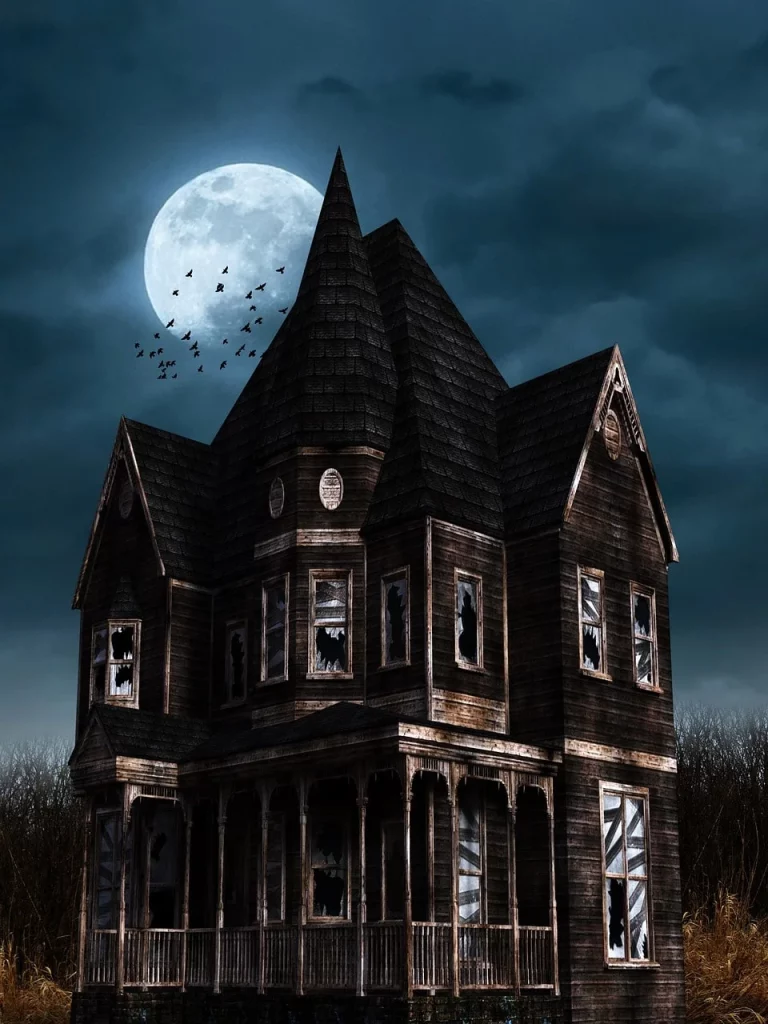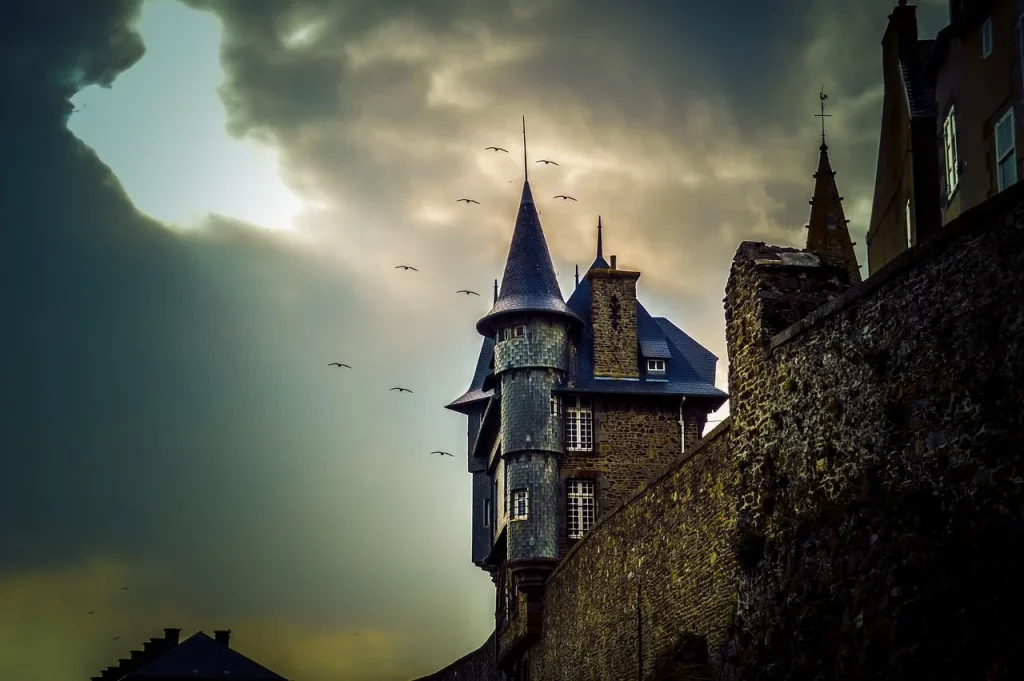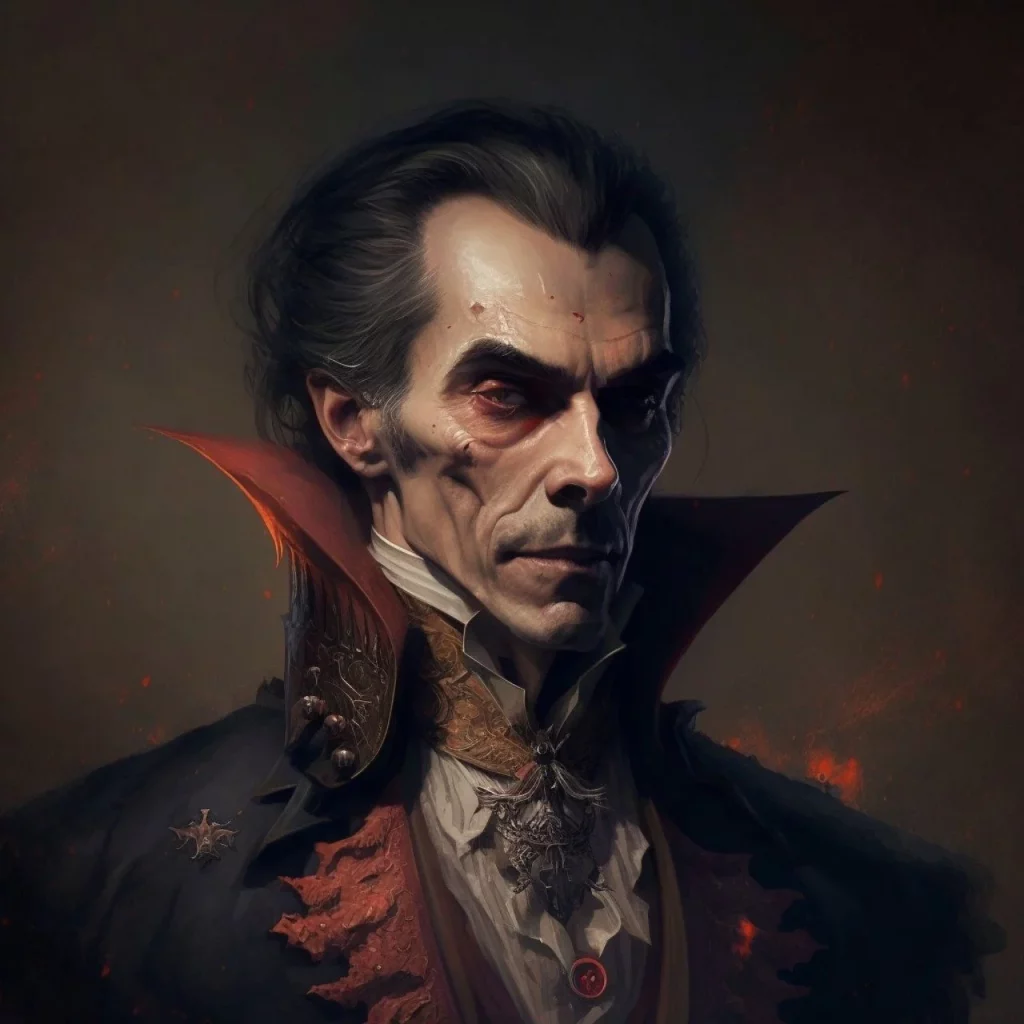Have you ever found yourself mesmerized by the mysterious allure of vampires? From ancient folklore to modern cinema, these nocturnal beings have captivated our imaginations for centuries.
In this article, we’ll sink our teeth into some fascinating vampire facts that shed light on their enigmatic existence. Whether you’re a die-hard fan or simply curious, prepare to embark on a thrilling journey through the shadows, exploring the myths, legends, and surprising truths behind one of the most iconic creatures of the night.
There are darknesses in life and there are lights, and you are one of the lights, the light of all lights.
Bram Stoker
Vampire Facts
Let’s start our journey into the world of vampires. Read carefully each fact because I created a quiz for you at the end of this page to test your newfound knowledge. Don’t disappoint me.
- The first recorded mention of these nocturnal creatures dates back to Mesopotamia, around 4,000 B.C., in the form of blood-drinking demons.
- In Slavic folklore, garlic’s ability to ward off evil spirits was linked to its protective properties against these beings.
- The word itself is derived from the Serbian “vampir” and was introduced into the English language in the early 18th century.
- Elizabeth Báthory, a Hungarian noblewoman, is often cited as a real-life inspiration, known for her brutal acts and rumored to bathe in the blood of virgins to retain her youth.
- New England’s Vampire Panic in the 19th century involved the exhumation of bodies to perform rituals intended to protect the living from consumption, believed to be caused by the undead.
- In 1897, Bram Stoker’s “Dracula” was published, fundamentally shaping the modern perception of these creatures with its depiction of Count Dracula.
- Porphyria, a rare blood disorder, has symptoms such as sensitivity to sunlight and receding gums that expose teeth, leading some to speculate its sufferers may have inspired vampire myths.
- The Chinese jiangshi, or “hopping” vampire, is a unique undead creature that moves by hopping and drains life force rather than blood.
- Some cultures believed that a cat jumping over a dead body could turn it into one of these creatures.
- The Highgate Vampire was a media sensation in the 1970s London, with claims of a tall, dark figure haunting Highgate Cemetery.
- Vampire bats, native to the Americas, are the only mammals that feed entirely on blood, engaging in behavior eerily reminiscent of the myth.
- In the 18th century, a vampire hysteria swept through Eastern Europe, leading to mass graves being dug up and bodies being staked or decapitated.
- The Volterra Vampire is an ancient Etruscan inscription referring to the “Vanth,” a winged demon, indicating that Italian vampire myths predate many others.

- During the Balkan vampire panic in the 18th century, Arnold Paole, a Serbian hajduk, was believed to have become one after his death, leading to a famous case of vampire exhumation.
- Psychoanalytic theory interprets the vampire myth as an expression of subconscious fears of intimacy and sexuality.
- The Legend of Lilith, considered by some as the first vampire, describes her as Adam’s first wife who left Eden and became a night demon.
- Ancient Egyptians had a deity, Sekhmet, often depicted as lioness-headed woman, who embodies the dual aspects of healing and destruction, with legends of her bloodlust being sated by alcohol-colored red.
- The Chupacabra, originating from Latin America, shares vampire-like characteristics, preying on livestock and draining their blood.
- Vampiric figures appear in the lore of many cultures, from the Indian “vetalas” to the Greek “vrykolakas,” highlighting the universal appeal of these myths.
- The energy vampire, a modern metaphorical concept, describes people who emotionally drain others, showing the adaptability of the myth.
- In medieval Europe, it was believed that being born on a Saturday meant you could see and ward off these creatures.
- The discovery of a 16th-century skeleton in Venice, buried with a brick in its mouth, was thought to be a ritual to prevent the deceased from returning from the grave.
- Lord Byron and his physician, Dr. Polidori, contributed to the vampire lore, with Polidori’s “The Vampyre” (1819) being one of the first vampire stories in English literature.
- Countess Elizabeth Báthory and Vlad the Impaler are often cited as historical figures who inspired the modern vampire mythos.
- The practice of burying the dead with stones or bricks in their mouths was believed to prevent them from biting others.
- In some cultures, it was believed that a seventh child of the same sex in a family was destined to become one of these creatures.
- The iconic vampire cape originates from stage productions of Dracula in the early 20th century, not historical lore.
- Sunlight’s harmful effect on vampires is a relatively modern addition to the mythology, popularized by the film “Nosferatu” in 1922.

- Reflections and shadows are believed to be absent in these beings due to their lack of a soul, a concept that varies across different cultures.
- The “Vampire’s Prison”, Castle Houska in the Czech Republic, is said to be built over a hole that leads to hell, constructed to contain evil.
- Immortality, a key trait, symbolizes the human desire to conquer death, yet their lore often highlights the loneliness and despair of eternal life.
- The creation of new vampires varies significantly across myths, from being bitten to engaging in a pact with the devil.
- In folklore, a person could become one of these beings after death if they were a witch, suicide, or rebel, highlighting societal taboos.
- Rabies, with symptoms including nocturnal behavior, aggression, and aversion to water and mirrors, has been linked to vampire legends.
- The Byzantine Empire had laws related to vampires, indicating the significant impact of these beliefs on medieval societies.
- The Muppet Show featured a beloved character, Count von Count, who humorously parodied vampire traits, teaching children to count.
- The belief in these creatures persisted in some Balkan regions into the 20th century, with rituals to prevent vampirism being performed.
- “Varney the Vampire”, a mid-19th century serial, was influential in shaping the genre, introducing many elements that would become standard in vampire fiction.

- Some vampire legends suggest that scattering seeds or grains near a grave would compel the creature to count them, delaying their return to the living world.
- The Greek island of Santorini is known for its ties to vampire legends, with ancient tombs and folklore adding to its mystique.
- In Romanian mythology, it’s believed that to find a vampire’s grave, one must lead a virgin boy on a virgin stallion through a graveyard; the grave the horse refuses to walk over houses a vampire.
- Ann Rice’s “Interview with the Vampire” revitalized the genre in the 20th century, emphasizing the complexity and tragedy of the vampire’s existence.
- The first film appearance of these creatures was in “Dracula’s Death” (1921), predating “Nosferatu” by a year.
- In some legends, vampires have the ability to transform into animals, such as bats, wolves, or even mist, to escape or hunt.
- The link between vampires and bats was solidified in the Western mind after the discovery of vampire bats in the New World; before this, European myths rarely mentioned bats.
- Transylvania, often associated with these beings, is a real place in Romania, rich in history and folklore, yet its connection to vampires is largely due to literary works.
- The “vampire squid”, a deep-sea cephalopod, gets its name from its webbed, cloak-like arms, showcasing how the myth has influenced scientific nomenclature.
- In the Philippines, the Manananggal is a terrifying creature that can separate its upper torso and sprout wings to fly into the night, seeking victims to drain their blood, blending the line between vampire and witch in folklore.
- A stake through the heart is a well-known method for dispatching vampires, a practice rooted in the belief that pinning the creature to the ground would prevent it from rising again.
- The pomegranate was sometimes associated with blood and the underworld, with some myths suggesting that eating these fruits could lead to a vampire-like existence, symbolizing the mingling of life and death.
Vampire Myths

Now that we’ve delved into the facts about vampires, it’s time to venture into the realm of myths. Let’s separate fact from fiction as we explore the captivating legends that have surrounded these nocturnal beings for centuries.
- Sunlight is Fatal to Vampires
In folklore, not all vampires were susceptible to sunlight. This notion was popularized by modern fiction. Originally, some vampires were merely weakened by the sun or could even roam freely during the day. - Garlic Repels Vampires
While garlic has been used historically in various cultures to ward off evil, its effectiveness against vampires is more a product of folklore and superstition than any recorded evidence. Vampires, as creatures of myth, have no scientifically proven aversion to garlic. - Vampires Cannot Enter a Home Without an Invitation
This concept is a modern addition to vampire lore, reflecting the idea of them as beings bound by certain rules of conduct. Historically, folklore varies widely, with many tales not mentioning such a limitation. - Vampires Have No Reflection
This myth was popularized in the 19th century and is not found in early vampire folklore. The idea likely stems from the association of vampires with soullessness and the belief that mirrors reflect the soul. - Vampires Are Undead Humans Who Feed Exclusively on Human Blood
In various cultures, they were believed to consume different substances, from animal blood to life energy. The exclusive focus on human blood is more a trope of modern vampire fiction than a universal fact in folklore.
No products found.
Vampire Quotes

I hope you are enjoying our journey so far. Let’s continue with some quotes about vampires. You can share yours in the comments so I can add them to the list as well.
The blood is the life… and it shall be mine.
Count Dracula in Bram Stoker’s “Dracula”
This chilling declaration by Count Dracula in Bram Stoker’s iconic novel encapsulates the essence of vampiric existence and their perpetual thirst for human blood, signifying their parasitic relationship with the living.
No, don’t kill me, I can’t die. I’m already dead. I’m already dead!
Anne Rice, “Interview with the Vampire”
Anne Rice, through her character in “Interview with the Vampire,” explores the existential crisis and the paradox of immortality that vampires face, being undead yet yearning for an end to their eternal suffering.
To die, to be really dead, that must be glorious!
Count Dracula
This quote reflects Count Dracula’s profound weariness with immortality and his longing for the peace that comes with true death, illustrating the hidden despair within the eternal life of vampires.
Vampires pretending to be humans pretending to be vampires … How avant-garde!
Anne Rice, “The Vampire Lestat”
Anne Rice offers a wry observation on the complexities of vampire existence through “The Vampire Lestat,” humorously noting the layers of deception that vampires engage in within human society.
I am Dracula, and I bid you welcome, Mr. Harker, to my house.
Bram Stoker, “Dracula”
Bram Stoker introduces the legendary figure of Dracula with these courteous words to Jonathan Harker, setting the stage for the novel’s exploration of the eerie charm and menacing hospitality of the vampire count.
Vampire FAQ

As we transition from the shadows of vampire lore into the light of our FAQ section, remember, this is your final step before the quiz. Read carefully to arm yourself with knowledge.
- Are vampires demons?
No, vampires aren’t demons in the traditional sense. They’re often depicted as undead beings who were once human but have been transformed by a vampire’s bite. While they share some characteristics with demons, such as superhuman powers and a thirst for blood, they are distinct in their origins and nature. - Can vampires fly?
This depends on the folklore or fictional universe you’re referring to. In some stories, vampires have the ability to turn into bats and fly. However, not all tales give vampires this power. More often, their supernatural speed and strength are highlighted, leaving flight to the more mystical or magical beings in vampire lore. - Are vampires undead?
Yes, vampires are considered undead. They’re beings that have died but continue to exist by consuming the life essence (typically blood) of the living. This undead state gives them various powers and immunities, along with their notorious aversion to sunlight, garlic, and holy symbols, depending on the lore. - Where do vampires come from?
They are a global phenomenon, with myths and legends about creatures like them appearing in many cultures throughout history. The modern vampire, as popularized in Western culture, largely stems from Eastern European folklore combined with early fictional works like John Polidori’s “The Vampyre” (1819) and Bram Stoker’s “Dracula” (1897). These sources amalgamated various myths to create the iconic vampire figure known today. - Can vampires eat human food?
Typically, they do not require human food for sustenance; their primary need is blood. While some stories suggest that vampires can consume human food for the sake of blending in or enjoyment, it provides them no nutritional value and, depending on the lore, may even be unpleasant or impossible for them to digest properly.
No products found.
Vampire Quiz

Welcome to the vampire quiz! Get ready to sink your teeth into these questions, because if you don’t get any right, you might just find yourself turning into a bat at midnight. No pressure!
Conclusion
Concluding our dive into the dark and mystifying world of vampires, it’s important to remember that these tales do more than just entertain; they invite introspection on themes of life, death, and what lies in between.
Vampires serve as a haunting yet fascinating mirror to our own existence, questioning the morals, fears, and desires that drive us. As we leave the shadows to return to the light, let’s carry with us the reminder that even in the most fantastical stories, there are grains of truth about the human condition.
And as always let’s close our journey with a funny question: If vampires had a dating app, what profile details do you think they’d list to attract their perfect match?


